Try GOLD - Free
OVERTHROWING THE MONGOLS
All About History UK
|Issue 146
How a Buddhist rebellion toppled the mighty empire and began the rise of the Ming dynasty Written

Floods, famine, pestilence. For the hard-pressed peasants of Yuan China, ruled over by the domineering descendants of the Mongol conquerors who had established themselves as overlords of the land, the series of natural calamities indicated one thing: their Mongol rulers had lost the Mandate of Heaven. With the Mandate of Heaven withdrawn, rebellion became not just possible but legitimate: Heaven itself asked of them to remove their unjust emperor and replace him with a new ruler.
But the Yuan dynasty, descended through Kublai Khan from Genghis Khan himself, was not about to simply shuffle back to Mongolia. There would be 17 years of conflict before a new emperor was able to found a lasting dynasty.
The conditions for this long transition had been laid earlier in the political weakness and infighting of the last Yuan emperors and the range of natural disasters that afflicted China in the 1340s and 1350s. The first phase of natural disasters culminated in the 1344 flood of the Yellow River. The river itself, sometimes called ‘China’s Sorrow’ for the devastation inflicted by its floods, is an essential part of China’s wealth, its waters providing irrigation for vast areas of agriculture. But because it carries huge amounts of silt, the river lays down deposits on its river bed wherever the stream runs slowly, raising the underlying level and, roughly every 100 years, causing the Yellow River to break through the levees and seek a new path to the sea. But the flatness of the North China Plain, while ideal for agriculture, means that these new channels can be hundreds of kilometres apart: in historical times, the Yellow River has flowed into the sea both north and south of the Shandong Peninsula. The 1344 flood moved the river’s mouth to south of the peninsula, where it remained until the middle of the 19th century.

This story is from the Issue 146 edition of All About History UK.
Subscribe to Magzter GOLD to access thousands of curated premium stories, and 10,000+ magazines and newspapers.
Already a subscriber? Sign In
MORE STORIES FROM All About History UK
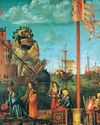
All About History UK
Medieval Pilgrimages
From penance to indulgence, everything you need to know about Christian holy journeys in Middle Ages Europe
9 mins
Issue 159
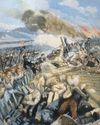
All About History UK
MUKDEN 1905
MUKDEN, MANCHURIA, CHINA 23 FEBRUARY - 10 MARCH 1905
11 mins
Issue 159
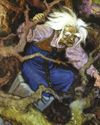
All About History UK
BEWARE BABA YAGA
Folklore expert Willow Winsham explains the history behind the mystery of this fearsome witch from Slavic legend
8 mins
Issue 159

All About History UK
ROYAL SCANDALS
THAT THREATENED THRONES
11 mins
Issue 159

All About History UK
DISASTER PLAN
How a lethal mixture of arrogance, fear and blind faith condemned millions of Chinese to death
10 mins
Issue 159

All About History UK
THE GODS OF NEW YORK
How a decade of turmoil shaped the Big Apple
1 mins
Issue 159
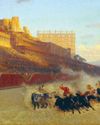
All About History UK
LOST ANCIENT SPORTS
Professor Peter J Miller discusses which ancient sporting traditions have continued into our modern world and which have been lost to time
4 mins
Issue 159
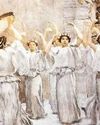
All About History UK
TERRACOTTA PANATHENAIC PRIZE AMPHORA
This ancient vase holding precious olive oil was gifted to the victors of an ancient athletic contest
1 mins
Issue 159

All About History UK
HENRY VIII HAD DIED YOUNG?
Without England's most notorious Tudor king, the country's religious and political history would've looked very different
6 mins
Issue 159
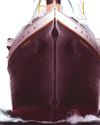
All About History UK
TITANIC MAKING AND BREAKING THE SHIP OF DREAMS
Uncover the inherent flaws and misplaced confidence that allowed a catastrophe to unfold
12 mins
Issue 159
Listen
Translate
Change font size
